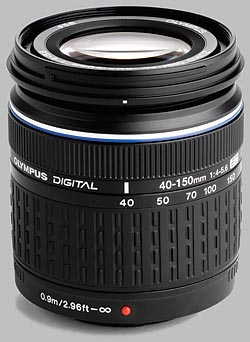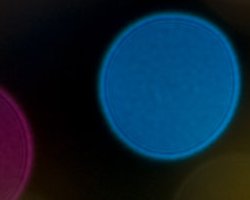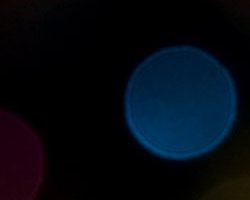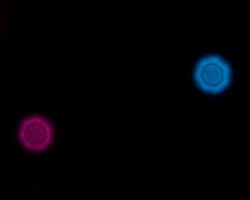| 40-150mm |
$300 average price |
|---|---|

|
|
Your purchases support this site
Buy the Olympus 40-150mm f/4-5.6 ED Zuiko Digital
(From Olympus lens literature) The Olympus 40-150mm f/4-5.6 ED Zuiko Digital is an 80-300mm (35mm equivalent) zoom lens in a short 7.2 cm body with ED lens elements, ensuring both picture quality and portability.
Boasting the smallest size and lightest weight in its class, this cost-efficient 3.8x telephoto lens uses an ED (Extra-low Dispersion) lens element for optimum correction of chromatic aberrations. Incorporating a circular aperture diaphragm for beautiful defocusing, this lens assures high picture quality throughout the zoom range, as well as providing an astonishingly short closest focusing distance of 90cm throughout the zoom range.
Introduction
The Olympus 40-150mm ƒ/4-5.6 Zuiko digital lens is a budget zoom telephoto lens produced for the four-thirds camera system. In 2-lens E-410 and E-510 body/lens packages, this is the second lens.
Since Olympus digital SLR cameras employ the four-thirds imaging sensor, any lens attached to the body will have an effective focal length (in 35mm terms) of double the listed length. Thus, for this particular lens, it will exhibit an effective focal length of 80-300mm. The lens takes 58mm filters, and comes with a cone-style lens hood.
This lens isn't a ''constant'' lens, in that as you increase the focal length, the maximum aperture size decreases. The following table reflects the change as you zoom:
| Focal length | 40mm | 50mm | 70mm | 100mm | 150mm |
| Max. aperture | ƒ/4 | ƒ/4.2 | ƒ/4.6 | ƒ/5 | ƒ/5.6 |
These figures just correspond to the focal lengths marked on the lens; in actual usage, the widest aperture adjusts quite precisely in conjunction with the focal length setting. As you zoom in and out at the widest aperture, you can see the aperture changing in one-tenth increments.
Sharpness
In images produced with the 40-150mm lens, sharpness is better than expected from a kit lens. The lens performs well with its fastest aperture range from ƒ/4-5.6, with an odd deviation at 50mm. Whether it is typical in this lens model, or just specific to this sample, there is an odd corner softness that appears solely at 50mm, where performance is sharp across the frame at other focal lengths. At 150mm, some slight generalized image softness crops up, but even then it doesn't exceed 3 blur units on our scale from 1-12.
Stopped down to even ƒ/5.6, image sharpness improves until it reaches its optimum sharpness at ƒ/8. According to our lab results, at ƒ/8, lenses don't get much sharper than this. Diffraction starts to set in at ƒ/16, with generalized image softness across the frame by ƒ/22; however, even then, it's still not exceeding 3 blur units.
All in all, the results for sharpness are quite impressive, considering the focal range of this lens; if this were a simple case of a full-frame lens on a digital body, I would write off the excellent performance as being the digital sensor focusing on the ''sweet spot'' of the lens. With the Olympus digital lenses, they were designed from the ground-up to work on digital bodies, and the design work by Olympus seems to have paid off here.
Chromatic Aberration
If there's a price to be paid for the excellent sharpness results we've just seen, it might be in below-average performance in handling chromatic aberration. The lens appears to be optimized for use in the telephoto spectrum (>70mm): from 40mm to 70mm, chromatic aberration is evident at all apertures. Further than 70mm however, chromatic aberration becomes less of an issue (the lens grouping focusing on the more central portions of the glass).
Shading (''Vignetting'')
Vignetting is rarely a factor for telephoto lenses, and this is the case when considering the results for the 40-150mm f/4-5.6. In the worst case scenario, you may see almost a half-stop of light fall-off in the corners when shooting wide open (ƒ/4.6) at 70mm. Other than this, light fall-off is negligible when shooting wide open, and at ƒ/5.6 and above, non-existant.
Distortion
There's a bit of a mixed bag when considering distortion on the 40-150mm. At its widest angle of 40mm, there is some fairly significant barrel distortion evident in the corners of the image. Distortion evens out at 50mm, but after that you start to see some pincushion distortion as you enter the telephoto region of lens (>70mm). The pincushion distortion doesn't get overly severe, however, the maximum distortion barely reaching -0.25%. Interestingly, the average distortion remains in the barrel aspect of distortion, meaning there is some skew in the images taken; if you were to shoot some straight lines and analyze the results with a straight edge, you might see some (slightly) interesting curves.
Autofocus Operation
The 40-150mm focusses quickly, racking through a full focus in less than a second, with a relatively quiet motor. The lens does not extend while focussing, and the front filter ring does not rotate. Point to point focussing is extremely quick. In low-light situations, unless you get some spotlighting on your subject you may find the 40-150mm hunts forever to find any kind of focus, especially on a telephoto setting where its fastest aperture is a paltry ƒ/5.6.
Macro
The 40-150mm is not designed as a macro lens, and its minimum focussing distance of 90 centimetres (almost three feet) makes this fact readily apparent. If you're intent on using it this way, you'll get a grand total of 0.14x magnification (0.28x in 35mm terms).
Bokeh
Click on these thumbnails for full-size samples:
 |
| 150mm, ƒ/5.6 |
 |
| 150mm, ƒ/8 |
 |
| 150mm, ƒ/22 |
Build Quality and Handling
Categorized in Olympus' range of ''Standard'' lenses (the other two groups being ''High Grade'' and ''Super High Grade''), the 40-150mm is well-constructed, with a comfortable fit and finish and nicely textured zoom and focus rings. However, the build material appears to be mostly plastic (the lens mount is also plastic). The advantage to this is a reduced weight of only 220 grams (7.7 oz). The zoom dial is very good, with less than a quarter-turn moving through the entire focal range. There is no "creep" factor, so it won't slide to the telephoto end of the zoom spectrum while held pointing down.
Alternatives
Olympus 40-150mm f/3.5-4.5 Zuiko Digital ~$230
This version of the 40-150mm configuration has been replaced by the subject lens, and arguably, the price differential doesn't make it a worthy alternative. The more recent version of the 40-150mm has a superior sharpness profile and better resistance to vignetting; interestingly, the chromatic aberration profile has reversed, with the newer lens showing CA in the wide end, rather than the tele end as the f/3.5-4.5 version does. Not really worth considering this lens unless you absolutely need the extra half-stop of speed.
Olympus 70-300mm f/4-5.6 ED Zuiko Digital ~$400
It's not really in the same category, as this lens' focal lengths range from an effective 140mm to a staggering 600mm. But, if you're in the market for a superzoom, for a couple of dollars more over the price of the 40-150mm f/4-5.6 you essentially double your reach for the same aperture settings.
Olympus 50-200mm f/2.8-3.5 Zuiko Digital ~$845
If you don't mind the extra weight (1070 grams vs. 220 grams), this super-fast zoom lens covers the same range and then some, with a slightly faster aperture profile, superior sharpness and chromatic aberration resistance. Of course, all of this comes at a significantly higher price, and it's definitely a lens that stands out.
Olympus 18-180mm f/3.5-6.3 Zuiko Digital ~$425
The Olympus all-purpose travel lens is a worthy alternative, if just for the convenience factor of not having to carry around two lenses to cover the same range as this one. We haven't tested this lens, but user reviews are generally positive.
Sigma 55-200mm f/4.5-5.6 DC ~$150
There aren't many reviews of this lens, and we haven't tested it, but for those trying to save their dollars, this could be a worthy alternative. Our experience with Sigma lenses in general is that in the right conditions they perform better than expected, but they are not exceptionally stellar in any one area.
Olympus 35-100mm f/2 PRO ED Zuiko Digital ~$2,200
At over seven times the weight, size and price, this lens may be an alternative, but probably not a very realistic one. With no less than 4 ED glass lens elements, the optical performance should be extraordinary, combined with the build quality and autofocus capabilities that would make this a truly awesome lens.
Conclusion
As a companion to the 14-42mm f/3.5-5.6 kit lens, the 40-150mm performs very well: excellent sharpness results, good resistance to chromatic aberration in the telephoto range, only marginal distortion and negligible vignetting. This is definitely a case of getting a very decent lens for the money, and to get even better quality the premium price ascends quite quickly. If you need better quality, it's likely you know it and you're already looking at more expensive options; otherwise, you'll probably be well-served with this lens.
Sample Photos!
Sample photos are available of two laboratory test targets to help in our readers' evaluation of the lenses we test. The VFA target should give you a good idea of sharpness in the center and corners, as well as some idea of the extent of barrel or pincushion distortion and chromatic aberration, while the Still Life subject may help in judging contrast and color. We shoot both images using the default JPEG settings and manual white balance of our test bodies, so the images should be quite consistent from lens to lens.
As appropriate, we shoot these with both full-frame and sub-frame bodies, at a range of focal lengths, and at both maximum aperture and f/8. For the '';VFA''; target (the viewfinder accuracy target from Imaging Resource), we also provide sample crops from the center and upper-left corner of each shot, so you can quickly get a sense of relative sharpness, without having to download and inspect the full-res images. To avoid space limitations with the layout of our review pages, indexes to the test shots launch in separate windows.
To see the sample shots from this lens captured with this lens on our test body, just click on either of the thumbnails below, and scroll as needed in the window that appears.
Olympus 40-150mm f/4-5.6 ED Zuiko Digital
Your purchases support this site
Four Thirds - Black
Olympus 40-150mm f/4-5.6 ED Zuiko Digital User Reviews
-
Very compact, good handling and build, great IQPlastic Mount
One of the best kit lens ever.
reviewed April 3rd, 2011 (purchased for $100)
Very useful focal range, but not long enough for me.
CDAF is a bonus for M4/3 users. -
accepts 58mm achromatic Canon close-up lens
I will wait until I have more shooting experience before rating the lens IQ. But I want to correct the impression that the field of view is not a true 150mm at the long end. I tested it against a Minolta MD 135mm f3.5 lens mounted via an adapter, and there clearly WAS a significant difference between the fields of view. I have no reason to distrust the labeled focal length.
reviewed August 11th, 2010 (purchased for $199) -
Here's a post I came across in another forum:
reviewed November 22nd, 2009
"I got this lens for my E-510, and for the price it's a great outdoor lens. But in the course of doing some experiments to try to work out various IS and focusing issues with legacy lenses, I had occassion to test it against a couple of Zuiko OM primes (135mm/f4.5 macro and 50mm/f1.4) and discovered, to my surprise, that at the "135mm" setting, the 40-150mm kit lens was considerably wider than the OM 135mm. It gets the same magnification only at its maximum "150mm" setting; and at that "150mm" setting, wide open (nominal f5.6), it seemed about a half-stop slower than the OM 135mm stopped down to f5.6."
TTesting against the 50mm OM, the 40-150mm kit lens had to be set at "53mm" to get the same FoV (I didn't test exposure)."
"So the "40-150mm f4-5.6" kit lens would be more accurately labeled a "43-135mm f4-6.3" lens. Still a bargain for the price, but some truth in labelling would be nice. And the recorded EXIF data on focal length and exposure with this lens will be somewhat off."
How come SLR Gear didn't bother to measure the actual (as distinct from advertised) focal lengths and zoom ratio? (No one else seems to have, either.) -
Lightweight, Cheap, SmallSlow Aperture, Plastic mount
I bought this lens used, and for what it is, it is a good lens. It is relatively cheap, in comparison to other manufacturer's kit telephoto zoom, as the e-520 has its own stabilization in the body. It is also very small and lightweight, and fits my small bag. A great piece of telephoto zoom for what it is worth.
reviewed March 7th, 2009 (purchased for $102) -
Price, weight and size (especially given the focal range), IQIQ not as great towards the long end, a bit slow (aperture and AF)
The perfect companion to the 14-42 and usually sold as part of the double zoom kit, this lens definitely is a worthy addition even if bought separately.
reviewed March 4th, 2009 (purchased for $150)
If you, like me, don't use telezooms that much then this just might do the trick better than more expensive options such as the ZD 50-200 (which admittedly is a far better lens).
The IQ is very good, especially at the wide end. My experience is that it becomes gradually worse, but the difference is not dramatic and when it comes to sharpness and contrast I do think that this lens stands head and shoulders above eg the Nikkor 70-300 on a D700...
Build quality is decent enough and the focus ring is smooth and broad enough to be useful. Non-rotating front element is a huge bonus for filter users. The AF could be snappier and the max aperture might be considered a bit slow (although not unusual for a kit telezoom), but all in all this is another very good lens from Olympus. -
Lowest blur in its class; small and lightweightLens hood needed to control flare; plastic mount
The brilliantly engineered Zuiko 40-150 joins the 9-18, 14-42, 70-300, and 35 macro in Olympus's class-leading family of consumer DSLR optics. Its sharpness results here on Slrgear are simply astonishing. At f/8 the 40-150's blur index is 1.0-1.5 center-to-edge, and mostly below 2.0 all the way from f/5.6 to f/16! Cost is $100 in an Olympus DSLR kit.
reviewed February 5th, 2009 (purchased for $100) -
Small, lightweight, sharpness, fast AFfocal lenght
The best kit lens i've ever seen. Sony doesn't even have a chance.
reviewed November 5th, 2008 (purchased for $129)
Lightweight, fits in a small pouch. Easy to carry.
The focal lenght could be more convenient.
40-200 / 4.0 - 5.6 would be the ideal range
I think this would be feasible without the need of moving to Pro.
Anyway, the IQ is very good and i cannot complain.





